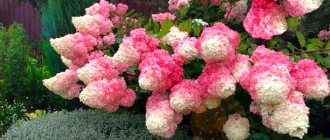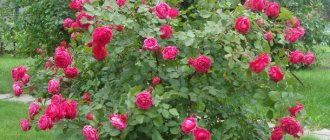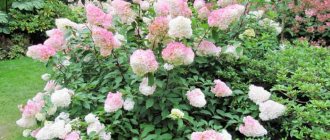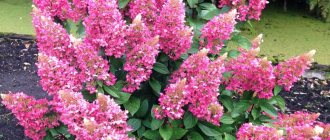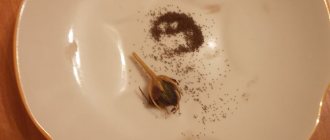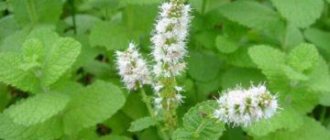Don't know how to decorate your site? Plant the best varieties of paniculata hydrangea. These luxurious plants with a huge number of beautiful varieties will not leave anyone indifferent. Gorgeous paniculate inflorescences up to 25 cm long in the shape of a wide pyramid consist of small and large flowers.
The main feature of flowering hydrangea is its ability to gradually change its color depending on the composition of the soil.
For your attention – our Top 15 beautiful varieties of paniculate hydrangea, which will feel great in the middle zone, for example, in the Moscow region. Photos and descriptions of varieties are accompanied by tips on care and recommendations for growing.
Bobo
The dwarf variety Bobo received the “Best Variety” award at a flower exhibition in Belgium in 2011. During the abundant and long flowering of this hydrangea, the color of its petals changes from white-yellow to soft pink.
Due to its low growth, Bobo hydrangea is suitable for growing in containers that can be placed on a balcony or summer terrace. It is advisable that this be a semi-shaded place, since in the bright sun the hydrangea inflorescences become smaller. It is important that the bush is protected from gusty winds.
| Purpose | Bush height (cm) | Bush width (cm) | Flowering period | Peculiarities |
| 70 | 50 | From July to September | Plant winter-hardy, but the roots young bushes needed for winter mulch | |
Frost resistance
Only young, recently planted hydrangeas do not withstand low temperatures well. After complete rooting, according to reviews, the variety overwinters well without shelter in the north of the Moscow region. If you plant Grandiflora in a place protected from the wind - in the North-West, Urals, Far East and Siberia.
In winter, the branches may freeze, but this will not affect the decorative appearance of the hydrangea if pruned short. It is better to avoid forming a standard tree or a tall multi-stemmed shrub in regions where the temperature often drops below -29° C.
Phantom
The variety is highly valued for its lush flowering and the unique honey aroma that the beautiful flowers emit. In summer, the inflorescences are light cream, and by autumn they become pinkish, while their tops turn yellow. The petals of this plant are slightly different from other hydrangeas: they are slightly elongated and are not located so closely to each other.
| Purpose | Bush height (cm) | Bush width (cm) | Flowering period | Peculiarities |
| 200 | 200 | From July to September | In the middle lane young plants may freeze so their cover layer of mulch | |
Botanical description
Hydrangea paniculata Grandiflora is a rounded bush with dense branches and leaves that fall off in winter. If you leave the plant without pruning, the crown reaches a diameter of:
- 3 years – 1 m;
- 5 years – 1.5 m;
- 10 and more – 3 m.
According to information from foreign sources, the hydrangea Grandiflora paniculata lives for about 60 years and can grow up to 7.5 m.
In Russia the climate is not favorable for this. The culture settles in the garden for no more than 40 years, and only with a good choice of location and good care. The height of the bush often does not even reach 3 m.
Hydrangea Grandiflora gives growth of about 25 cm in the first years, then the pace slows down somewhat. After a short pruning, the bush quickly recovers; within a season, the shoots stretch up to a meter and bloom fully.
Young branches are straight, reddish-brown, pubescent. They are strong, but under the weight of the lace cones they move to the sides and bend. After heavy rain or overhead watering, they may fall to the ground. The bark on old skeletal branches becomes bare, rough, takes on a grayish tint, and peels off.
The leaves are opposite, rough, green, bluish on the inside, and do not change color in the fall. Internodes are widely spaced. The shape of the plates is ovoid, the base looks like a wide wedge, less often - rounded, the tip is sharp, elongated, the edge is jagged. The length of the leaves reaches an average of 7.5-10 cm, the maximum is 15 cm.
The root system is powerful, but superficial, extending beyond the projection of the crown. Hydrangea Grandiflora produces many offspring. If a large bush is left unattended for at least a season, the growth can become a problem, and after a few years it will be very difficult to uproot it.
The Grandiflora variety and the Paniculata species hydrangea are similar in description. Only the cultivar forms large panicles and blooms a little later.
Reproduction methods
The seed propagation method is not suitable for the variety. Grandiflora can be propagated vegetatively:
- Summer cuttings (June or July). They are cut into 2-3 internodes, the lower leaves are removed, planted in peat with sand, perlite, or light soil. You can try to root the branches remaining after pruning; there will be a lot of attacks, but some will take root.
- By dividing adult hydrangeas during transplantation.
- Root suckers.
- By layering - in the spring, a low-lying shoot is added. In the fall or at the beginning of the next season, they are separated from the mother bush and transferred to a permanent place.
How is it different from tree-like?
The differences here are significant, so even a beginner will be able to understand them and choose the right shrub for their site. Tree hydrangea is a typical shrub, but paniculata is more reminiscent of a tree.
And this is a significant difference for those who think on the scale of landscape design: what is missing on the site needs to be planted. In addition, the paniculate species is stronger and frost-resistant.
Young shoots of the tree gain strength by autumn and are covered with a special layer of bark. But in tree-like shrubs, young shoots freeze completely in the Russian winter, because they simply do not have time to get stronger.
But next year they will send out shoots again and bloom in the same color. If this type of hydrangea is covered under snow, then next year the bush will gain strength and will bloom actively again.
Hydrangeas with variegated foliage
Hydrangea paniculata variety Shikoku Flash, Shikoku Flash
The leaves of the Shikoku Flush variety are dark green with bright creamy streaks. An excellent variety for lovers of variegated plants.
Strong, resilient bush with white paniculate inflorescences. The leaves are dark green with bright creamy strokes and strokes spreading across the entire leaf blade.
Hydrangea paniculata variety Shikoku Flash, Shikoku Flash (photo Agroholding SEARCH)
How to plant
The first flowering of the variety occurs in the 4th–5th year after planting. In order for it to be long and lush, the plant needs to be provided with suitable conditions. Select a location, prepare the site. Paniculata hydrangea will develop well in moist and loose soils with an acidic and slightly acidic reaction. The variety can be grown as a shrub or tree.
Did you know? Paniculata Grandiflora was the first species discovered by Europeans in 1768 on the island of Mauritius. At that time, the height of the bush in the garden reached 10 m.
Landing dates
In the southern regions, the plant is planted in spring, in April - May, and in autumn in September - October. In the central and northern regions, spring planting is recommended. In the fall, hydrangea will not have enough time to take root; early frosts will destroy it. When planting, the soil should be warmed to +8...+10°C. It is best to choose a time when the weather is already stable and there is no threat of return frosts.
Selecting a location
Delicate petals do not tolerate the aggression of the active sun. It is advisable to shade the bush at this time using a screen or choose a place with natural partial shade. The root system of the plant is located close to the surface, so a flat garden surface is desirable for planting a tall bush or tree. Protection from the wind is also important, strong gusts of which can break branches.
Selection and preparation of planting material
It is best to purchase seedlings from trusted garden stores or nurseries. A healthy plant has a moist root system with flexible shoots. There should be no stains or smell of mold. The central stem contains 2–3 shoots with well-developed internodes. Before planting, the roots are soaked for half an hour in water with the addition of potassium permanganate, which will serve as a preventive measure against fungal diseases.
Also find out what kind of soil is needed for planting garden hydrangea.
Landing
The area needs to be dug up and cleared of plant debris. A pit for the seedling is prepared measuring 50x60 and 60 cm deep.
Planting pattern:
- A drainage layer of 10–12 cm is placed at the bottom of the hole.
- The nutrient mixture is prepared from garden soil, compost, peat and turf soil in a ratio of 1:1:2:2.
- Half of the mixture is placed on top of the drainage in the form of a mound 15 cm high.
- Having placed a seedling on a hill, sprinkle it with soil. The root collar remains above the ground.
- Then water it, using a bucket of water.
Outdoor care
Hydrangea Grandiflora is one of the easiest to maintain. But in order for the plant to be beautiful, healthy, bloom profusely and for a long time, care must be regular.
Watering schedule
Hydrangea loves water; abundant and frequent irrigation is needed, especially in hot summers. The soil under Grandiflora should always be moist, but not wet. To reduce the amount of watering, the hydrangea tree trunk is mulched with pine needles, bark, and peat.
At least 20 liters of settled soft water are used at the root. Every month, citric acid, wine vinegar, and whey are added to the liquid once.
Feeding
During the season, the hydrangea Grandiflora, which has undergone short pruning, should grow shoots 1 m or more long and produce a panicle at the tip of each young branch.
Flowering is lush and abundant, lasting from mid-summer to late autumn. All this requires increased nutrition.
The bush is fed:
- in spring - nitrogen to stimulate growth;
- twice - in the summer with a complete complex fertilizer with microelements, during the budding period and when the hydrangea opens its first corollas;
- in the fall - phosphorus and potassium, so that the plant overwinters better and blooms well in the next season.
As a summer fertilizer, it is recommended to use special preparations for rhododendrons and hydrangeas. They acidify the soil and contain all nutrients in the correct proportions.
Grandiflora responds well to foliar feeding. The bush is alternately sprayed with a complete mineral complex dissolved in water and chelates every 2 weeks. As soon as flowering begins, foliar feeding is stopped.
Trimming
Grandiflora tolerates pruning well, including short pruning. How the culture will be formed depends on the owners. From Paniculate Hydrangea you can create:
- tall multi-stemmed shrub;
- standard tree;
- a relatively small (about 1-1.5 m) erect plant with huge, up to 30 cm, flower cones.
It is important not to let the bush grow. You can put it in order at any time, but it will require effort, especially removing the overgrowth.
Short pruning is recommended for paniculate hydrangeas in a small garden:
- In autumn, flower stalks are removed;
- in the spring, before the start of sap flow or after the sticky leaves bloom, the shoots left for flowering are shortened by 3-4 buds, the rest are cut into a ring or at the root;
- An adult hydrangea is rejuvenated annually - several old branches are removed entirely, leaving 1 internode above the soil surface.
Preparing for winter
Grandiflora tolerates frost well, this is always indicated in the description of the variety. Only seedlings require shelter for the first 2 years after placement on the site:
- they are tilted to the ground, covered with pine needles or leaves;
- tied with spruce branches;
- hidden under arcs covered with non-woven material.
Then it is enough to sprinkle the hydrangea root with peat or pine litter, like roses. Layer – at least 15 cm.
Resistance to low temperatures increases:
- correct agricultural technology;
- autumn moisture recharging;
- fertilizing with phosphorus and potassium at the end of the season.
Paniculate hydrangea Grandiflora is an old, proven, frost-resistant variety that does not require careful care. The plant needs to be watered frequently and abundantly, follow a feeding schedule, and be pruned short in the spring. Then the inflorescences correspond to the description of the variety, reach 30 cm, and last until frost.
Advantages and disadvantages of the variety
Grandiflora owes its prevalence and popularity to its undeniable advantages over other varieties. The advantages of culture include:
- late flowering periods. This is a variety that remains a decoration of the landscape until the onset of winter;
- growth rate. During the season, hydrangea adds up to 25–30 cm in height and width until it reaches its end point;
- intensive stem formation;
- lush flowering, large inflorescences, color variability;
- long life cycle;
- ease of care;
- versatility in use. Suitable for cutting and landscape design;
- high frost resistance;
- good rooting of planting material;
- high resistance to infections.
The disadvantage of Grandiflora hydrangea is its poor drought resistance; the crop requires constant watering. It develops fully only on acidic soils.
Advice! In gardening, they often use the method of planting hydrangeas in decorative round structures that prevent the stems from drooping and breaking.
Trimming
It is necessary to regularly prune the branches for further formation of branches and inflorescences. The procedure is carried out with sharp pruning shears or garden shears, previously disinfected. Young plants are shortened by 2-3 buds, adults are cut as low to the ground as possible, 15-20 cm from the surface. Such bushes will recover in 1-2 years and begin full flowering. Inflorescences should be removed in a timely manner so that the plants retain their strength for wintering.
